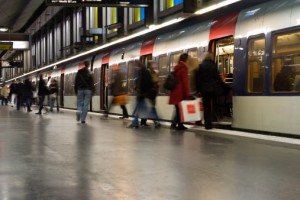 The subway and commuter train systems of New York and New Jersey are the primary means of daily transportation for millions of people traveling to work or school and going about their daily lives. These major systems of transportation require substantial and frequent repairs and maintenance to eliminate hazards and dangers to passengers. Such hazards include electrocution on the tracks, turnstile injuries, train door injuries, trips and falls, platform obstructions and overcrowding that could lead to falls.
The subway and commuter train systems of New York and New Jersey are the primary means of daily transportation for millions of people traveling to work or school and going about their daily lives. These major systems of transportation require substantial and frequent repairs and maintenance to eliminate hazards and dangers to passengers. Such hazards include electrocution on the tracks, turnstile injuries, train door injuries, trips and falls, platform obstructions and overcrowding that could lead to falls.
When needed repairs or maintenance are not handled in a timely manner, accidents can occur. Ginarte Gonzalez Winograd L.L.P., has successfully represented passengers injured on these transportation systems. If you or your loved one has been injured while riding or attempting to ride a subway or train in New York or New Jersey, call us for immediate attention at 1-888-GINARTE (888-446-2783) or fill out our online contact form for a free consultation.
Speak With A Knowledgeable Professional
Subway and Train Platform Dangers
Anyone who lives or works in the New York and New Jersey metro area knows that the subway and commuter train system is an integral part of the city’s transportation network. People who live in outlying areas often choose to ride the subway to work instead of fighting the traffic that plagues the city streets. Getting from Point A to Point B in New York City is often accomplished much more rapidly by jumping on the subway rather than by driving or hailing a cab. In 2011 alone, the New York subway system provided over 1.6 billion rides to passengers.
The commuter rail systems in New York and New Jersey are owned and operated by government agencies. The New York City subway, for example, is operated by the City of New York. This means that the city is responsible for maintaining the system and is potentially responsible for injuries caused by a failure to maintain the system properly.
A passenger could be injured in a number of ways in a subway platform accident.
The following are common scenarios that lead to injuries:
- Malfunctioning turnstiles
- Electrocution as a result of contact with the tracks
- Slips, trips or falls on the platform or on stairs or escalators
- Defective or improperly maintained train doors
- Fall injuries that result from overcrowding in the station
- Obstructions on the platform that cause a passenger to trip or fall.
Many of these hazards are the result of negligence on the part of the governmental authority charged with maintaining the rail system. Although negligence is determined on a case-by-case basis, the general concept of negligence holds a person or entity potentially responsible for injuries caused by hazards on a property that were known or should have been discovered by a reasonable property owner.
Government Defendants in a Subway Platform Accident
Although subway and commuter train platform accidents are similar to other personal injury lawsuits or premises liability cases, one important difference is that the responsible party, or defendant, is a government agency or entity.
Whenever a government agency or entity is a defendant in a lawsuit, the rules of procedure change. All personal injury accident lawsuits must be filed within the applicable statute of limitations timeframe. However, when the government is a defendant, the injured victim is also typically required to provide a notice of claim very soon after the accident. In the case of a New York subway platform accident, for example, a victim must file a notice of claim with the New York City Transit Authority within 90 days of the accident.
Failure to timely file notice could bar a victim from recovering compensation for his or her injuries after an accident. The notice of claim is simply a legal requirement that puts the government agency or entity “on notice” of a potential lawsuit.
Get Help From Our Subway Platform Accident Lawyers
Speak With A Knowledgeable Professional
We serve clients throughout the New York and New Jersey metro area, and the firm has offices in New York, Queens, Newark, Union City, Elizabeth, Perth Amboy and Clifton.
